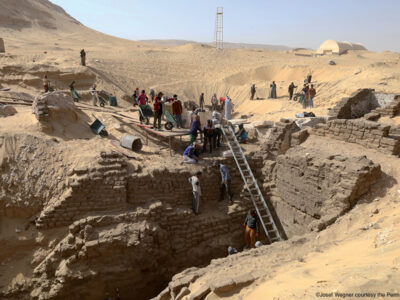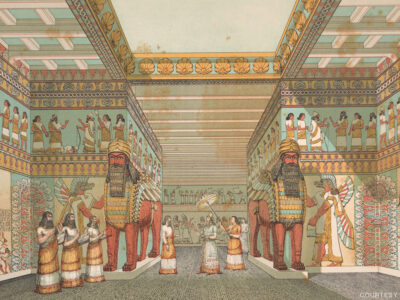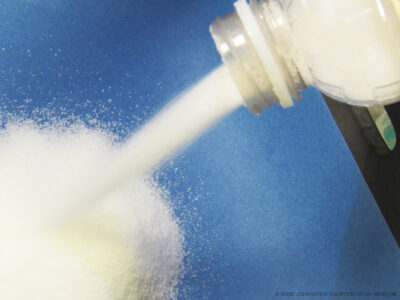When Richard Hodges became director of the Penn Museum in October 2007, he professed a belief that such tenures should be limited. “Most positions require time to learn the ropes, then have a compelling period once learnt,” he told the Gazette at the time. “I propose 5 to 7 years in office is a good period.” [“Gazetteer,” Nov|Dec 2007].
He has stuck to that credo. In June he will leave his post to become president of the American University in Rome (for a similarly limited stint, he says). With six months to go at the Museum, Hodges sat for an exit interview with associate editor Trey Popp. He reflected on his accomplishments, the challenges he faced, and what he hoped to accomplish with the remainder of his time.
As you look back over the last four years, what stands out as the thing you’re most proud of?
Probably the thing I’m most proud of is that it now feels like a museum. [Former] Provost [Ron] Daniels was very skeptical of it as a museum, as such, when I attended the search committee. I think you can say that now, especially [as] we seem to be getting a large increase in our visitors, that the museum is really punching its weight as a place in Philadelphia.
What do you attribute the rise in visitor numbers to?
The fact that our exhibitions are on the one hand attractive, challenging, and interesting—and on the other hand we’ve got a professional museum staff in place now, thanks to support from College Hall, that actually is making sure that we’re reaching lots of different audiences.
What are some of the audiences that have been targeted?
We’ve obviously targeted our old audiences, who’ve been very loyal. And they’ve grown, in fact—or come back. But we’ve been targeting as well essentially the Millennial audiences, those who are as a rule turned off by museums. And through our various activities, through our various parties, as well as these very modern exhibitions, they’re starting to come.
What have been the most successful kinds of activities and exhibits in attracting that younger sort of visitor?
I think what attracts them is our exhibits like Secrets of the Silk Road or Imagine Africa. Which are backed up by challenging exhibits like Righteous Dope Fiend, about heroin addiction. And the fact that you can go to our Museum café and find good food, contemporary food.
What about improvements to the building itself?
We’ve air-conditioned five galleries. Therefore we’ve given the University the opportunity to raise audiences in the summer months, when otherwise it’s incredibly hot in here. In other words, it can serve a tourist community, as well as the University community, between May and September.
We’re also well on towards making a new small lecture theatre—in fact the University’s original lecture theatre, the Widener lecture theatre. Which was a wood shop until recently. It’s at the end of the West Wing. We’ve won wonderful support from a family that have treated us extremely well to renovate it and make it once more one of the iconic spaces in the Museum.
One of the last times we spoke was following the cuts that were made in 2009, including the elimination of MASCA [the Museum Applied Science Center for Archaeology]. Do you think that that decision has paid off? How does it look in retrospect?
I’m not sure “paid off” is the right word. It was a lot of pain. It was very hard on the individuals concerned. A lot of people wrote and petitioned against it. But what I have to say is … America is a global country. And as a global country, and as a major museum in one of the great universities on the globe, then there have to be standards in terms of research, both theoretical and methodological. And frankly, those standards weren’t there. And that’s why we had to act in the way we did. And that was painful.
I think many tenured academics—I don’t support the tenure system. I think it’s a very bad system. Tenure leads, frankly, to a lot of rather prejudiced and self-serving analysis, which isn’t good for the theory and matters of the discipline. So we were forced to make decisions which, as a university professor, I well recognize are hard. But at the same time, my loyalty has to be to my discipline, and its place on the globe. And so if you ask me: Do I regret it? I regret the pain it caused, but not the outcomes.
The last time we talked about those changes, you had said that research was not going to stop at the Museum, it was just going to be redirected or re-conceptualized. Is that the way it has turned out?
It is. It goes forward. It goes forward unevenly, but it does go forward. We continue to publish a lot of books. We continue to run projects. We continue to have research projects here, but there’s more that needs to be done in that sector to meet those world standards. I can’t emphasize that too strongly. If I was saying that to someone about Wharton, they would stare at me as though I’d lost my mind, because they regard themselves quite correctly as a world-class organization, and they run to compete with the world. But I’m afraid that has to be said very, very clearly here, in the fields of archaeology.
What do you have on your plate between now and when you step down in June?
Among other things, we’re opening our next blockbuster. After Secrets of the Silk Road we’re opening Maya 2012 in early May, so hopefully that will galvanize a great deal of interest, as will smaller exhibits. Meanwhile we’re trying to work hard to market the Museum not only to the city but also frankly to the University—working on curriculum issues to get more students in here with a new SAS advisory committee, and trying essentially to make the museum a great facilitator for the teaching of archeology and anthropology in the University as a whole. So there are lots of things that are on the agenda.
Is there anything else you’d like to add?
We’ve done a lot, actually, for our collections. We’ve digitized them now; that’s going online next year. We’ve done a lot for our conservation programs. When I came, there were two and a half members of our conservation team to deal with a million objects. We’re now up to nine. And in the West Wing, apart from the climate control of the galleries, we are going to have new conservation, physical anthropology, and general paleo-economy labs, where the teaching of archaeology, alongside the new ceramics lab we’ve put in, should meet world standards. So we’ve done quite a few things in these years.




